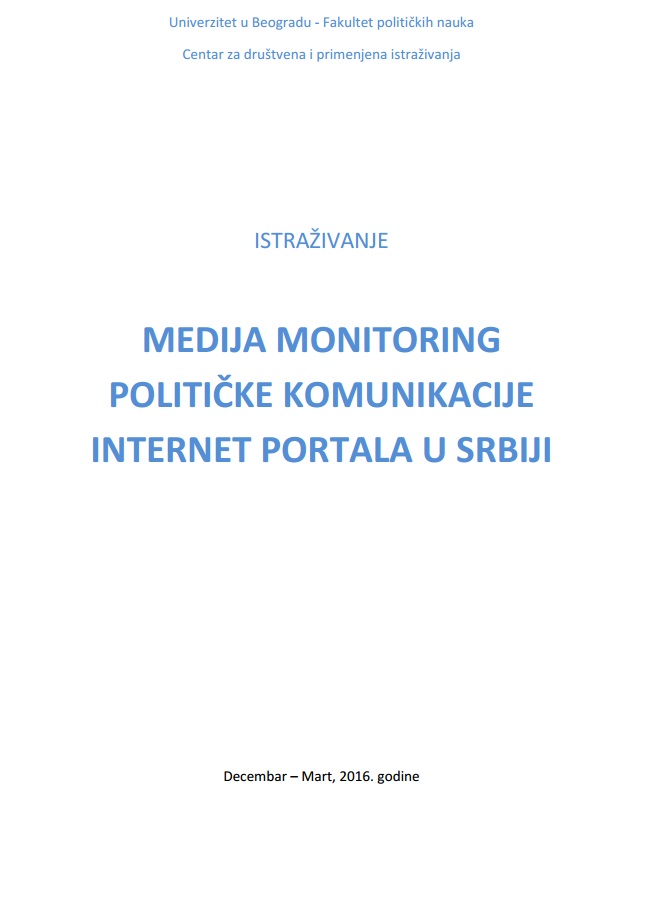
We kindly inform you that, as long as the subject affiliation of our 300.000+ articles is in progress, you might get unsufficient or no results on your third level or second level search. In this case, please broaden your search criteria.

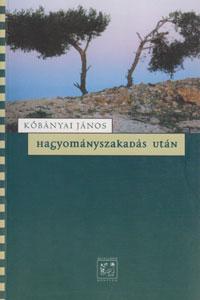
Most of the essays in this collection have been first published in the periodical Múlt és Jövő (Past and Future). The author deals with the question: What does it mean to be a Jew in today’s Hungary. He analyses the past experiences and values and takes as example the biography and lifework of Sándor Scheiber, Aladár Komlós, Károly Pap, Imre Ámos - and as contemporary Ágnes Heller.
More...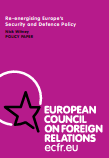
INTRODUCTION What does Russia think? (by Ivan Krastev, Mark Leonard and Andrew Wilson, pp. 1-13) THE “PUTIN CONSENSUS ”The “Putin consensus” Explained (by Vyacheslav Glazychev, pp.9-14) The School of Consensus and the War of the Majority (by Modest Kolerov, pp. 15-20) An Ideological Self-Portrait of the Russian Regime (by Leonid Polyakov, pp. 21-24) DILEMMAS OF RUSSIA’S MODERNIZATION Authoritarian Modernization of Russia in the 2000s (Olga Kryshtanovskaya, pp. 27-34) A Bit of Luck: The Development of the Political System in Russia (by Aleksey Chesnakov, pp. 35-40 )Has the Economic Crisis Changed the World View of the Russian Political Class? (by Valery Fadeev, pp. 41-46) Dilemmas of Russia’s Modernization (by Vladislav Inozemtsev, pp. 47-51) RUSSIA AND THE WORLD: MEDVEDEV’S “EUROPEAN SECURITY TREATY” PROPOSAL Rethinking Security in “Greater Europe” (by Fyodor Lukyanov, pp. 55-60) Multipolarity, Anarchy and Security (by Timofey Bordachev, pp.61-66) The Medvedev Initiative: The Origins and Development of a Political Project (by Boris Mezhuyev, pp. 67-71) AFTERWORD How the West Misunderstands Russia (by Gleb Pavlovsky, pp-73-78)
More...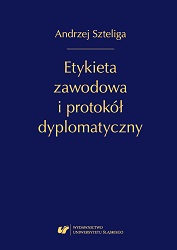
Good manners and ethical conduct are extremely important in interpersonal relationships in general, but they gain special significance in international and interstate relations at various levels. An example, especially on the professional level, can be diplomatic behaviour, which constitutes a specific compilation of historical traditions and contemporary good practices, based on legal and customary norms. // The book „Professional Etiquette & Diplomatic Protocol” by Andrzej Szteliga in an accessible way presents and discusses classical principles of savoir-vivre, professional and social etiquette as well as basic issues of diplomatic protocol and foreign service. Therefore, many of its pages contain such terms as ethics, professional etiquette, savoirvivre, diplomatic protocol, foreign service - explained theoretically and discussed in practice. The book, due to its character as an academic textbook, has a unique cognitive and educational value, not only for students, but also for politicians (especially young), local government officials and managers. The text of the publication is enriched by numerous photographs and situational drawings. // The work presents in detail the classic principles of savoir-vivre, i.e. issues related to greetings and farewells, getting to know one another and establishing contacts and the role of business cards in this process, conducting private talks and official speeches, the mastery of diplomatic, official and private correspondence, precedence (seniority) in professional and social relations, and traditional forms of address in various environments. // Further thematic blocks are related to the issues of the diplomatic protocol, i.e. to the basic elements of diplomatic and consular law, the characteristics of the rules governing foreign contacts (not only diplomatic and consular), the organisation of visits and meetings, the preparation and dispatch of invitations, participation in official and accompanying programmes, conducting negotiations and concluding agreements, a diplomatic ceremony, a flag protocol, placement of officials and guests and the order of speeches, organisation and operation of the foreign service in Poland and abroad (the Ministry of Foreign Affairs and bilateral and multilateral posts), awards and distinctions.// The substantive part of the work ends with a presentation of typical improper behaviour and gaffes, as well as advice on how to avoid them.
More...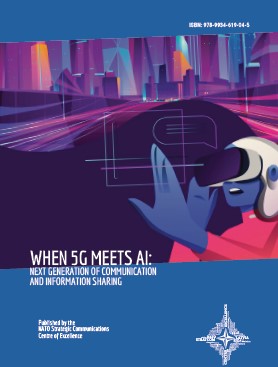
The adoption of fifth generation (5G) wireless technology will touch nearly every aspect of our lives. While changes brought by 5G will primarily affect sectors that depend on smooth wireless connection – such as transportation, healthcare, or manufacturing – they will also alter the realm of (strategic) communications. In the coming decade, 5G and edge computing will generate new opportunities for how humans interact with each other and experience the world. Greater connectivity and access to information enabled by 5G also promise to bridge the digital divide, improving democratic participation and citizen mobilization. At the same time, there will be more opportunities for misuse of this technology. Events of the last ten years have demonstrated the impact that digital transformation is having on democracy and political life. Consider the role that social media has played in key political events such as the Arab Spring or how the advent of e-voting and e-political participation changed the outcome of some elections throughout the pandemic. The emergence and accelerated adoption of new technologies has seen a concurrent rise in digital repression and disinformation operations. While (online) disinformation is not a new phenomenon, rapid advances in information technologies have altered the ways in which information (and disinformation) can be produced and disseminated. Data capture, speed, and connectivity offered by 5G will equip both state and non-state actors with more effective tools to tighten information control, repress political opponents, and manipulate public opinion online.
More...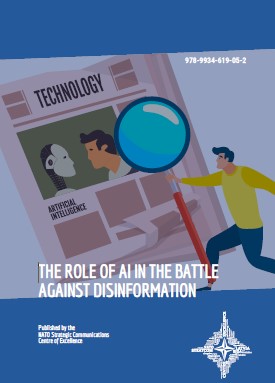
Detecting and countering disinformation grows increasingly important as social media sites have become a leading news source for most people. Efficient disinformation campaigns lead to negative real-world consequences on a global scale, both in politics and in society. Machine learning (ML) methods have demonstrated their potential for at least partial automatisation of disinformation detection and analysis. In this report, we review current and emerging artificial intelligence (AI) methods that are used or can be used to counter the spread and generation of disinformation, and briefly reflect on ongoing developments in anti-disinformation legislation in the EU. This overview will shed light on some of the tools that disinformation-countering practitioners could use to make their work easier.
More...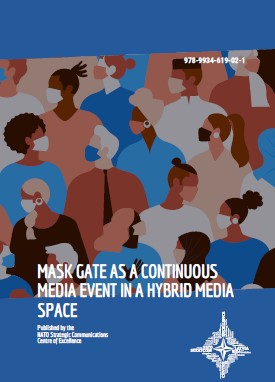
This study examines the evolution of the “Mask Gate” media event that took place in Finland amidst the COVID-19 pandemic and state of emergency in 2020. In March-August 2020, there was a dispute between various public health institutions and authorities as to whether the public should be required to use face masks. This investigation focuses on the construction of the media event, specifically on the interplay and dynamics between social media and mass media, as well as the public reactions evoked by the Mask Gate in Finland. Our aim is to describe the critical turning points in the development of the media event, thus tracing the evolution of such media events in the present media system. We illustrate our case with the help of a data set consisting of 391 033 messages about respiratory masks found on social media and traditional news media outlets. We focus our analysis on a subset of this data set concerning the “Mask Gate”. On the basis of our analysis, we present a timeline of the Mask Gate as well as analyse the most important actors, platforms and affective reactions that played a role in the construction of the event. An autopsy of such a notable media event can assist organisations in developing their communication competencies for risk, strategic and crisis communication situations, in which it is imperative for an organisation to restore its public legitimacy.
More...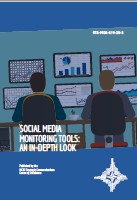
Information is power and, in this day and age, the Internet is increasingly becoming the primary source and vector for the transfer of information between people. Digital media is an essential source of information for people worldwide. Compared to traditional media, digital media consumption grows rapidly with each year. The COVID-19 pandemic contributed to this process, with most work, learning, entertainment and communication in technologically advanced countries transferring to the online environment. Social media plays a significant role in people’s lives. There are 4.2 billion social media users worldwide, more than 53% of the world’s population. Since 2021, the number of social media users has grown by 490 million, a 13% increase. This means that the number of new social media users grew by more than 900 users per minute. The amount of content generated on social media is tremendous—there are 474,000 Tweets, 69 000 Instagram posts, and 400 hours of new Youtube videos uploaded each minute. On Facebook alone, there are 510,000 comments, 293,000 status updates, and 136,000 photos uploaded per minute.
More...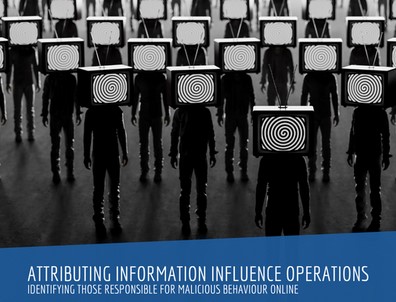
By their nature hybrid threats create ambiguity. They are covert, obscuring intent and enabling plausible deniability. This makes identifying both who is behind them and their motives a significant challenge. Attribution must grapple with this challenge. It involves identifying the responsible actors, understanding what they are hoping to achieve and how they are seeking to accomplish it. Without a methodical and consistent approach underpinning attribution, planning and executing effective responses is far more challenging. The online environment has become a rich source of opportunities for a type of hybrid threat, referred to in this report as ‘Information Influence Operations’. These are deliberate attempts at deception, including interference in democratic processes, using disruptive and illegitimate means which are readily available to hostile actors. Those responsible for malicious behaviour online are motivated by a wide range of reasons. Organised, state-sponsored instruments of influence work across borders, furthering strategic aims by reaching directly into a targeted nation’s society and political structures. Others act for simpler reasons such as excitement, financial gain or self-actualisation. Working out who’s who means untangling a variety of evidence and indicators. Threats which occur in the digital domain pose a particular problem. By their very nature, online platforms are susceptible to manipulation, and even though responses such as takedowns are increasingly common, more work is needed to improve the process of identifying those responsible for malicious behaviour. A cat-and-mouse game has developed between hostile actors, governments, researchers and technology companies. The supporting concepts have not always kept pace with emerging threats.
More...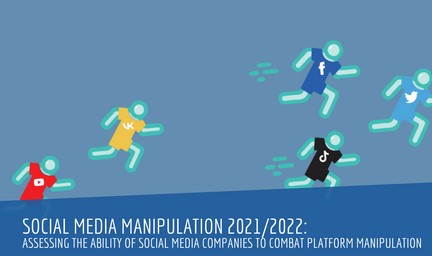
The ongoing war in Ukraine has shown the importance of being able to defend and influence the information environment in order to win a modern conflict. Coordinated social media manipulation campaigns continue to be an important tool for adversaries. Therefore, assessing the abilities of social media companies to protect their platforms against manipulation continues to be important for understanding how well our societies are able to protect our information environment against antagonistic threats. To further our understanding of platform manipulation, we re-ran our groundbreaking experiment to assess the ability of social media companies to counter platform manipulation. This year, we added a sixth social media platform, VKontakte, to our experiment. To test the ability of social media companies to identify and remove manipulation, we bought inauthentic engagement on 46 posts on Facebook, Instagram, Twitter, YouTube, TikTok, and VKontakte (“the platforms”), using three high-quality Russian social media manipulation service providers.
More...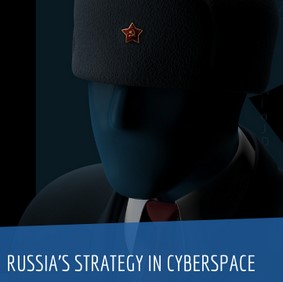
Headlines connecting Russia to the vague notion of ‘cyber’ have become daily bread for Western publics and decision makers alike. From the damage done by NotPetya or attacks against Ukraine and Georgia, to Russia’s hacking and leaking operations in US and European elections, Russia’s offensive operations are consistent threat. An increasingly important tool in what Russia views as the ongoing “information confrontation,” Russia utilizes cyber operations alongside other military and non-military means to pursue strategic objectives. On the other hand, recent years have seen Russia’s attempts to close and secure its own digital information space. By using a combination of legal and technical means, the Kremlin tries to impose control both over digital infrastructure and content, efforts which are aimed at ensuring independence from the global Internet network and thus enhancing their information security. Russia sees activities in cyberspace as a subset to the all-encompassing framework of ‘information confrontation,’ which is derived from the Russian understanding of relations between states and, more specifically, a subset of the struggle between great powers for influence in the world. According to Russian thinkers, the information confrontation is constant and ongoing, and any means can be used to gain superiority in this confrontation.
More...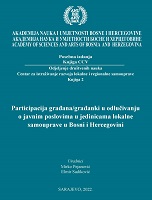
Studija Participacija građana/građanki u odlučivanju o javnim poslovima u jedinicama lokalne samouprave u Bosni i Hercegovini nastala je kao rezultat provedenog naučnoistraživačkog projekta čiji je nosilac Centar za istraživanje razvoja lokalne i regionalne samouprave Akademije nauka i umjetnosti Bosne i Hercegovine. U realizaciji projekta sudjelovali su akademik Mirko Pejanović (kao rukovodilac Centra, inicijator i koordinator projekta) i akademik Slavo Kukić, profesori/ce: Univerziteta u Sarajevu (prof. dr. Elmir Sadiković kao voditelj projekta i prof. dr. Elvis Fejzić); Univerziteta u Tuzli (prof. dr. Najil Kurtić); Univerziteta u Istočnom Sarajevu (prof. dr. Zlatiborka Popov Momčinović); Univerzitet “Džemal Bijedić” u Mostaru (prof. dr. Rebeka Kotlo) i Sveučilišta u Mostaru (doc. dr. Ana Mari Bošnjak). Anketno istraživanje i unos podataka u SPSS program uradio je viši asistent na Fakultetu za upravu, mr. Hazim Okanović. Poseban doprinos u koncipiranju metodološkog pristupa i analizi rezultata empirijskog istraživanja dao je prof. dr. Najil Kurtić. Participativna demokratija zauzima posebno mjesto u savremenoj političkoj teoriji. U vremenu predstavničke demokratije kao dominantne demokratske forme pitanje sudjelovanja pojedinaca u politici i u procesima političkog odlučivanja postaje sve značajnijim. Pored slobodnog izbora predstavničkih političkih institucija, u svim demokratskim društvima postoje i razvijaju se instituti i različiti oblici neposredne demokratije. Politička participacija je pojam koji označava načine na koji pojedinci sudjeluju u procesima političkog odlučivanja. Najšire mogućnosti za ostvarenje ideala participativne demokratije građani imaju u lokalnim zajednicama. U njima ljudi zadovoljavaju najveći dio svojih svakodnevnih životnih potreba. Lokalne vlasti su građanima najbliže vlasti. Građani su najbolje informisani o radu lokalnih vlasti. Zapravo, građani/ke imaju neposredan interes i najšire mogućnosti da sudjeluju u procesima odlučivanja o javnim poslovima u svojim lokalnim zajednicama. Zbog toga su i mogućnosti za afirmaciju participativne demokratije i razvoj participativne političke kulture najveći u okvirima lokalnih zajednica O razvoju demokratije u jedinicama lokalne samouprave u postdejtonskoj Bosni i Hercegovini napisane se brojne studije. Izvedena su i određena, iako parcijalna istraživanja. Međutim, ova studija holističkim i interdisciplinarnim pristupom, sintezom savremenih teorijskih znanja i rezultata empirijskog istraživanja, daje cjelovit uvid i relevantne naučne spoznaje o stvarnim dostignućima, nedostacima, ali i mogućnostima unapređenja institucionalnog okvira političke participacije građana u jedinicama lokalne samouprave u Bosni i Hercegovini. Strukturu studije čine dva osnovna dijela. Prvi dio studije čine autorski prilozi u kojima su elaborirani najvažniji teorijski aspekti političke participacije građana u Bosni i Hercegovini i u savremenom svijetu. U prilozima se tematiziraju pitanja participativne demokratije kao demokratske forme, ideala i političkog prava. Prenose se iskustva i prakse političke participacije u drugim evropskim zemljama i kompariraju sa bosanskohercegovačkim. Posebno se tematiziraju pitanja informativno-komunikacijskih aspekata participacije, rodne ravnopravnosti i učešća žena u politici. Ukazuje se na nužnosti revitalizacije lokalne demokratije, posebno u kontekstu razvoja savremenih digitalnih tehnologija. Specifične naučne kompentencije članova/ica istraživačkog tima omogućile su interdisciplinaran naučni pristup elaboraciji fenomena političke participacije građana/ki u lokalnim zajednicama. Teorijske analize i hipoteze u prilozima autora/ica su bile osnova za koncipiranje anketnog upitnika i provođenje empirijskog istraživanja. Drugi dio studije sadrži naučnu analizu rezultata provedenog empirijskog istraživanja. Istraživanje je provedeno u periodu oktobar – novembar 2021. godine, neposrednim anketiranjem građana/ki na prostoru osam opština i gradova Bosne i Hercegovine. Odabrani gradovi / opštine se bitno razlikuju u broju stanovnika i u stepenu socio-ekonomske razvijenosti. To su varijable koje u pravilu utiču na oblike i intenzitet političke participacije. Anketni upitnik je sadržavao 25 pitanja otvorenog i zatvorenog tipa. Anketirano je ukupno 1000 ispitanika, što je bio relevantan uzorak za testiranje postavljenih hipoteza. Interpretacija rezultata empirijskog istraživanja izvedena je kroz tri osnovne varijable. Prva je komunikacijska varijabla koja obuhvata pitanja koncepta informisanosti građana, njihovo zadovoljstvo komunikacijom sa lokalnim dužnosnicima te faktorima koji utiču na apstinenciju građana od procesa političke participacije. Druga je institucionalno-iskustvena varijabla građanske participacije. U okviru ove varijable analizirani su institucionalni / statutarni oblici građanske participacije i faktori koji utiču na uključivanje građana u participativne aktivnosti. Ovaj dio analize empirijskog istraživanja posebno se fokusira na pitanje očekivanja građana, u smislu njihove percepcije važnosti participacije, preferencije određenih oblika participacije, kredibilnosti poziva na participaciju, percepcije njihovih prava i sloboda te samopercepciju njihovih stvarnih mogućnosti uticaja na proces donošenja političkih odluka i oblikovanja javne politike u lokalnim zajednicama. Studija u cjelini daje nove naučne spoznaje i značajan naučni doprinos proučavanju razvoja lokalne samouprave u postdejtonskoj Bosni i Hercegovini. Prema svom sadržaju studija može biti od velike koristi u razvoju predmetnih silabusa na fakultetima društvenih nauka, studentima, naučnoj i stručnoj javnosti. Rezultati istraživanja mogu pomoći institucijama vlasti u oblikovanju i razvoju novih zakonskih i statutarnih oblika građanske participacije u jedinicama lokalne samouprave, prilagođenih očekivanjima građana i potrebama savremenog društva.
More...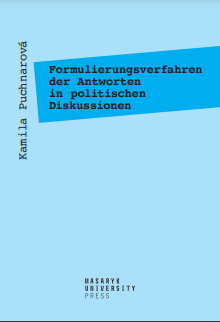
This publication deals with the spoken language and the language of politics in the contact of political television talk shows. The main attention is focused on the ways of formulation, above all on the pragmatic characteristics of questions and answers from the point of view of speech acts. These theoretical considerations are used to implement a detailed analysis of the answers of discussion participants on the Günther Jauch political television talk show. The objective is to discover and describe the specific linguistic features of these answers, among other things from the point of view of their responsiveness, hyperinformativity and working with emotions. This publication is intended especially for linguists.
More...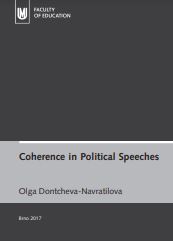
The monograph studies coherence in political discourse from the perspective of discourse analysis, pragmatics and genre analysis. The investigation into coherence strategies in the genre of opening addresses is performed on the material of speeches delivered by Directors-General of UNESCO. The analysis focuses on interpersonal meanings conveyed by modal expressions, personal pronouns, evaluative lexical units and signals of dialogicity. These interpersonal meanings are interconnected with patterns of thematic progression, continuity of referents, temporal anchoring of the discourse in the moment of speaking, and numerous cohesive signals. The author points out that the choice of coherence strategies is interwoven with persuasion strategies which the politicians use in relation to their communicative intentions and the rhetorical structure of the genre of opening addresses.
More...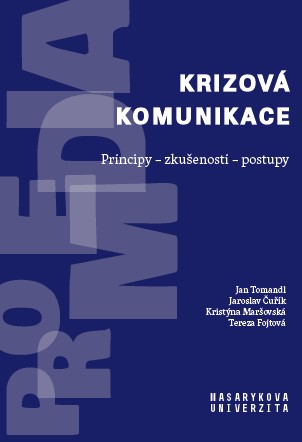
This most wide-ranging and comprehensive handbook on crisis communication in the Czech context to date explains the principles of efficient and ethical public relations in reputational crises as well as during extraordinary events. The ambition of the book is to help organizations which have run into difficulties, while at the same time to contribute to the cultivation and professionalization of Czech communication practice. The authors, with rich professional experience in the media as well as public relations know that no organization in the world is immune to crisis situations that attract media attention. From time to time it is necessary to deflect the attack of a rival corporation, to explain a controversial step, to clarify published inaccuracies, to deal with an accident in a production facility, or to deal with the aftermath of a natural disaster. Today, information travels faster than ever before: a media fire that threatens the interests or the very existence of an organization can spread globally within a few minutes. However, not every crisis has to end in catastrophe. What matters is the quality of managerial decisions, as well as the ability to convey them to the media and to the public. Communication skills are particularly at the core of crisis communication, which is considered the crown discipline of public relations. The book describes the most common causes of crises and reveals the fundamental principles and guidelines of crisis communication. It explains how crisis situations of all kinds are perceived by journalists and what their work processes are. Further, it describes strategies and tactical options for crisis communication as well as suitable tools, from press releases to social media. The team of authors, comprising journalists, communication experts and pedagogues in the field of communication, aimed at creating a book which is well-grounded in science and professional experience and at the same time accessible and useful for a wide spectrum of readers: press secretaries, PR professionals, local politicians, managers, entrepreneurs as well as public relations employees in organizations. The book also represents a valuable source of information for students of journalism, marketing and similar fields. The goal of the book is to shed light on the whole spectrum of issues, not just through dry definitions but also with concrete examples from Czech as well as international practice, from business, politics and other areas. The reader will learn how multinational companies, top managers, politicians, Czech companies, offices and other institutions have dealt with serious communication crises. The significance of crisis communication is most obvious in extraordinary situations, which in the Czech context have included floods, the methanol scandal, and lately the Covid-19 pandemic. The manuscript of the book originated largely before the pandemic, but it also captures some of the first communication and journalistic experiences from the coronavirus crisis. The book is being published as the first volume of a new “ProMedia” series by the Department of Media Studies and Journalism at the Faculty of Social Studies, Masaryk University.
More...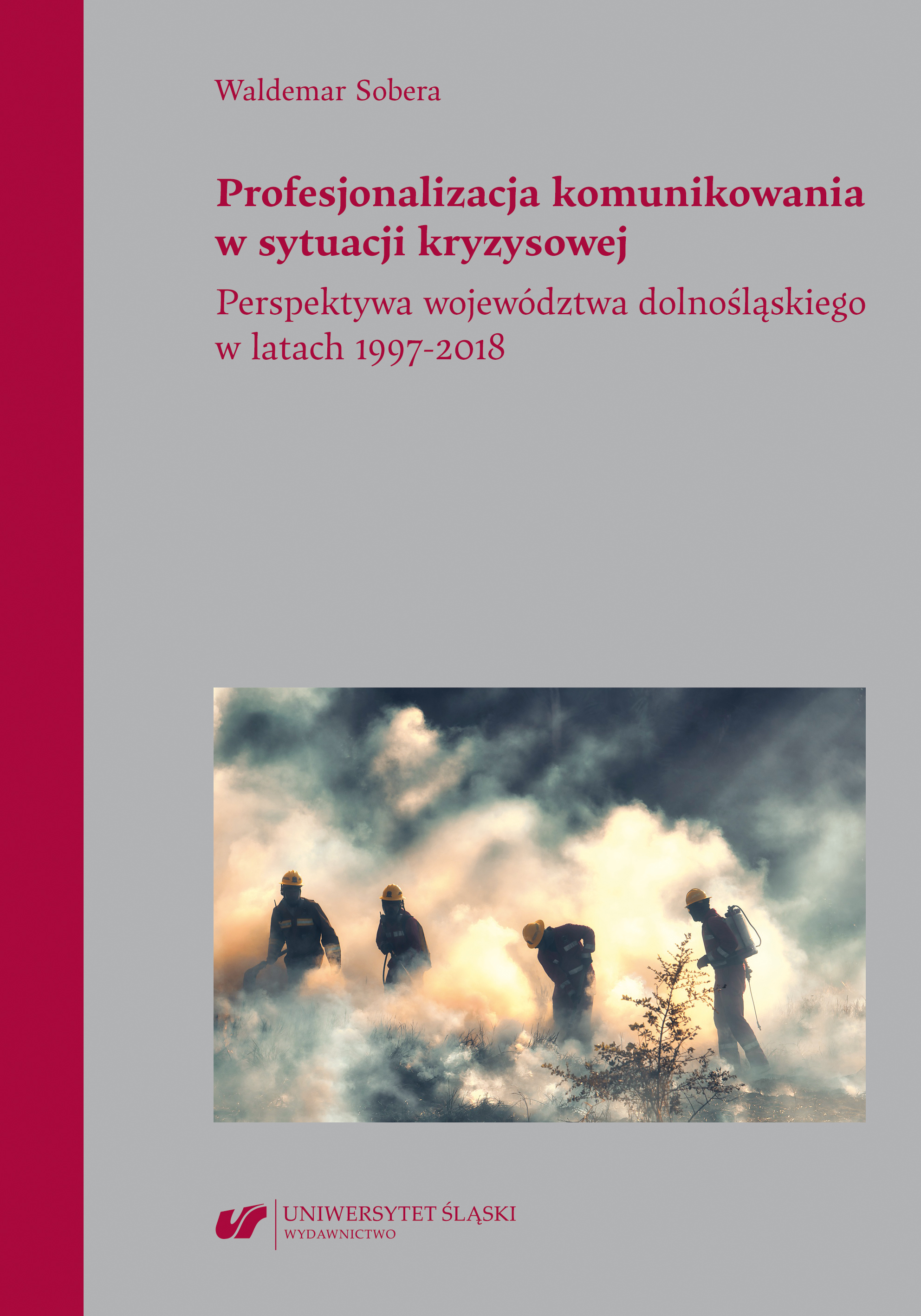
The book was dedicated to the mechanisms, standards, and relations between public ad-ministration, dispositional groups and media connected with the communication process during crisis situations, and to assessing their level of professionalization. The research was carried out in the Lower Silesian voivodeship in the years 1997 to 2018. Surveys, in-depth interviews and desk research were used to achieve the study's goals. The analysis allowed to make a complex characterization of communication in crisis situations and provide a recommendation that could increase the effectiveness of information transfer after its adaptation.
More...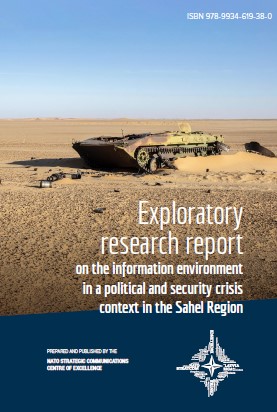
It can be daunting to describe media dynamics at the scale of a country, or even a group of bordering countries, such as those in the Sahel, given the profusion of what can be considered media productions and the complexity of the connections between them. The countries of the Sahel region are also strongly influenced by external media productions that are often locally accessible. Indeed, these external productions have an impact on the international understanding of the region’s issues. This fact in turn has a significant impact on the sources selected in the monitoring on the Sahel region. We are talking about a media ecosystem rooted in complex and fragile relationships of trust toward different epistemic sources and a relative understanding of the media world, characterized by practices of re-appropriation and information-sharing. Media systems in the Sahel did not wait for the emergence of the Internet to become decentralized, but intrinsically featured rumours and orality. The importance of local radio stations across the region is a manifestation of this today. Understanding this complex world requires an examination of the uses of the media, the messages they convey, the sources they utilize, processes of interpreting content, and the socio-political impact of the content in question.
More...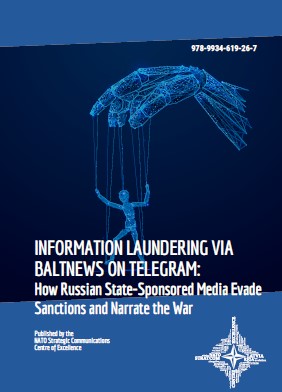
Information has long been used as a foreign policy tool by the Kremlin. Most recently the Russian attack on Ukraine has prompted a new wave of research into the way pro-Kremlin messaging is spread in Western countries and to what effect. This study examines a specific form of information influence campaigns (IICs): information laundering (IL). IL is a compilation of deception techniques and thus has the potential to change readers’ beliefs and attitudes. Overall, the study presents a refined, systematic, and reproducible way to identify which current IL attempts target the audience of a specific Telegram channel, and which networks of websites are behind these attempts. It also asks which potential framing biases the audience could be influenced by and with what strategic aim.
More...
Russia and China have effectively contributed to shifting the debate on climate change into the realm of morals, rights and economic policies, rather than scientific reality. For them, climate change is not only a matter of the factual impact of carbon emissions on weather patterns, as argued by O’Connor and Weatherall1 , but also a question of morality or values. It is not only a scientific reality, but also a socially and politically constructed concept.2 Over the years, China and Russia have consistently shifted and adapted their climate change narratives, reflecting the political nature of the issue. China has undergone a notable transformation, shifting “from a passive participant to a proactive actor” in the global climate arena.3 Meanwhile, Russia has demonstrated a range of positions on the issue, from denial to acceptance to operationalisation of climate change.
More...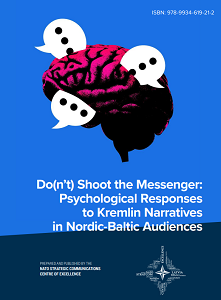
This report is co-authored by Aiden Hoyle, Gunhild Hoogensen Gjørv, Charlotte Wagnsson, and Bertjan Doosje. The report is a product of the PhD research fellowship by Aiden Hoyle, who did part of his experimental research on emotional responses to Kremlin’s narratives at the NATO Strategic Communications Centre of Excellence (COE) in Riga. Aiden Hoyle’s work made an important contribution to the Centre’s Nordic-Baltic project, which has been running since 2016. This ongoing effort monitors and analyses Russian and Chinese influence operations in the NordicBaltic region, which includes Denmark, Estonia, Finland, Iceland, Latvia, Lithuania, Norway, and Sweden. Since its inception, the project has published several reports mapping and comparing narratives hostile to national interest, regional cohesion, and the realisation of strategic interests within the European Union and NATO. Drawing on the expertise of subject matter experts representing the eight countries and research conducted by the COE, this project has significantly advanced the understanding of a common threat. But what about its impact? Aiden’s research offers a rigorous novel approach to understanding how hostile narratives affect audiences and suggests what nations can learn from these findings in terms of their own strategic communications. Implementation of this research would not have been possible without partnerships. We would like to thank the UiT The Arctic University of Norway, the Swedish Defence University, the University of Amsterdam, the Netherlands Organisation for Applied Scientific Research (TNO), and the Dutch Defence Academy for their cooperation.
More...